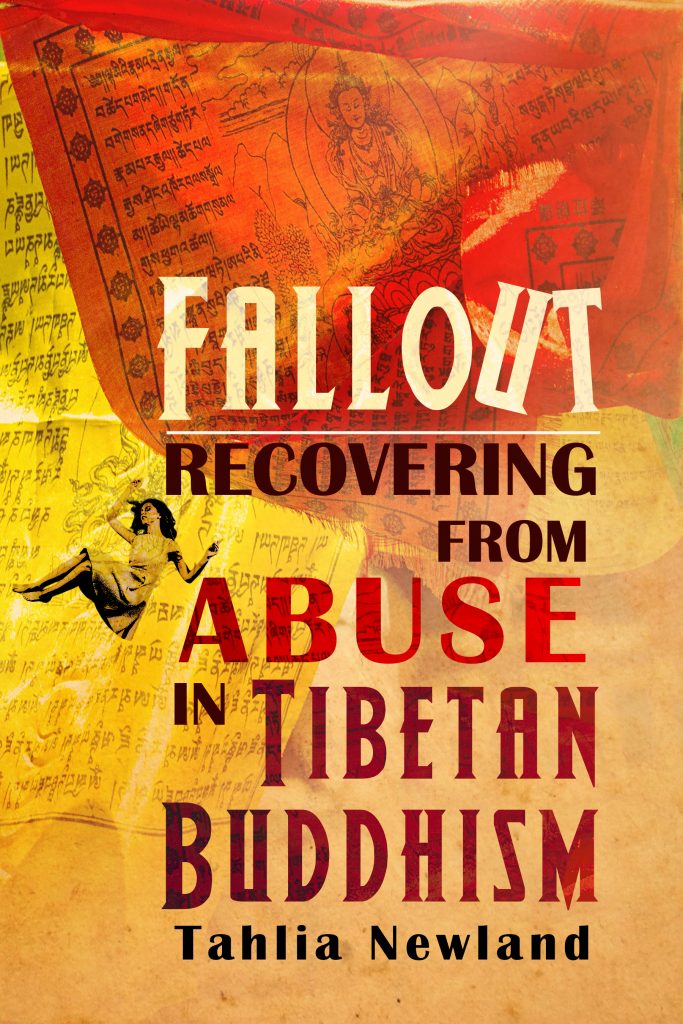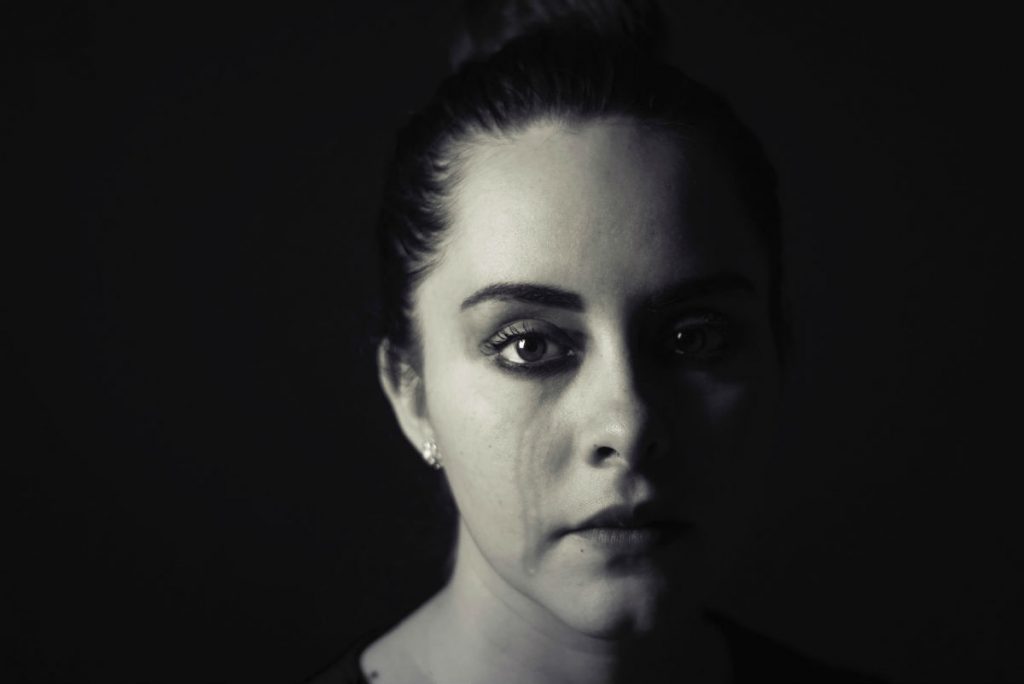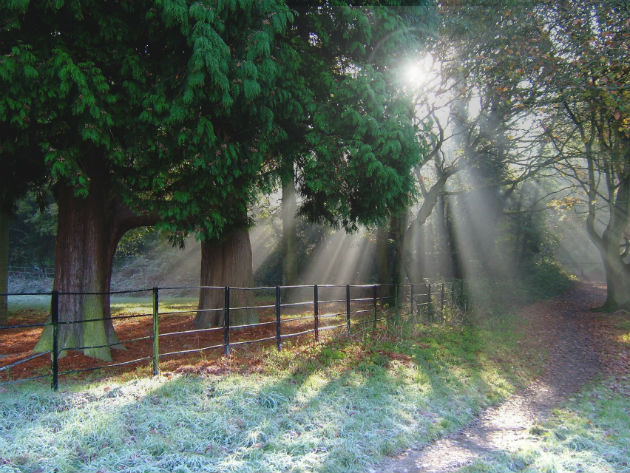
What’s it like to wake up and suddenly discoverer your beloved spiritual teacher has been a serial abuser for decades?
In her lucid and courageous memoir, Fallout, Recovering from Abuse in Tibetan Buddhism, Tahlia Newland reveals how she herself grappled with with this incredulous news over a period of months and years. Newland also shares many moving and insightful stories from the community of people — called “What Now?”— that emerged to support one another, and especially survivors, during this heart-shattering time.
But Fallout is much more than a memoir.
In addition to its very human stories, Fallout provides an overview of the events that took place once the abuse had been revealed by 8 dedicated, long-term students of Sogyal Rinpoche, and a brilliant analysis of how deeply caring, idealistic people can get caught up in an intricate web of deception. The material on the dynamics of abuse and high-demand organizations has been thoroughly researched so you’ll come away with a greater understanding of why people stayed and how profoundly they were damaged, both abuse survivors and those who suffered secondary trauma or discouragement and disillusionment.
Newland also explores, in detail, the kinds of spiritual ideas that can be misused by a spiritual teacher and his closest students to ensure obedience, enable abuse, and justify violence as kindness.
Fallout is written in a matter-of-fact way, without an emotional charge, personal agenda, or vendetta. That’s not to say you won’t be disturbed, and rightly so, by some of the material in the book.
A powerful, cautionary tale, I highly recommend Fallout to anyone who has been impacted by abuse in a spiritual organization, or simply wants to understand what to look for and avoid before they dedicate themselves to a spiritual teacher and community.
Fallout, Recovering from Abuse in Tibetan Buddhist is available in Paperback and Kindle versions on Amazon.com and other Amazon sites and at the Book Depository where they provide free delivery worldwide. Visit TahliaNewland.com to get Media Kit.
Take a look at the table of comments to see what you’ll be invited to ponder when you read Fallout:
- The Shock of Discovery
- A Plan for Telling the Truth
- Initial Thoughts
- Support from the Dalai Lama
- Talking with Dharma Friends
- Waiting for the Letter
- The Letter
- The Blog Discussions Begin
- Feedback and Suggestions
- Sogyal’s Response
- Responses from Lamas and Others
- The What Now? Group
- Sogyal’s Retirement
- The D.A.R.V.O Response
- Personal Attacks
- Cognitive Dissonance
- Beliefs and Perceptions
- Why They Stayed
- Further Revelations
- A Toxic Culture
- Sexual Abuse
- To Stay or Not?
- Practice Repercussions
- Recognizing Trauma
- Gaslighting and Institutional Betrayal
- Spiritual Bypassing
- Further Psychological Perspectives
- Abuse by Other Lamas
- The Code of Conduct
- Shut Up and Kicked Out
- Dharma Protectors
- The Independent Investigation
- Recovering from Trauma
- Did Sogyal Apologize?
- The Process of Cult Recovery
- Evaluating Sogyal’s Teachings
- Finding Closure
- A Misuse of Buddhist Beliefs
- Unhealthy Guru-Student Relationships
- Absolute and Conventional Truth
- Seeing the Guru as a Buddha
- Samaya and Not Criticizing
- ‘Crazy Wisdom’ or Just Crazy
- Obedience Without Question
- Devotion Without Discernment
- Karma
- A Common Sense View
- Choosing a Teacher
- Cult Warning Signs
- Support Truth Tellers
- An Unfinished Story
Reading Fallout helped me take the next step on my own path of healing from the abuse that occurred in Rigpa. I hope you’ll find it helpful too.
Fallout, Recovering from Abuse in Tibetan Buddhist is available in Paperback and Kindle versions on Amazon.com and other Amazon sites and at the Book Depository where they provide free delivery worldwide. Visit TahliaNewland.com to get Media Kit.
More Significant News
In case you haven’t heard, several other significant events related to abuse in Rigpa took place during the past month.
- The Charity Commission for England and Wales announced that Patrick Gaffney has been disqualified from being a Trustee of any charity for a period of eight years because he had knowledge of instances and allegations of improper acts and sexual and physical abuse against students at the charity but failed to take appropriate action in response to this information.
- Lerab Ling lost its defamation case against attorney Jean-Baptiste CESBRON and Midi Libre. The judge ordered the 133 plaintiffs to pay him 50 GBP each and Lerab Ling to pay 5,000 GBP.
- In an article called This Is Abuse, Tricylce Magazine published in full two powerful speeches on abuse in Rigpa given by former nun and Sogyal Rinpoche’s personal attendant, Damcho Dyson and dedicated, long-term student Tahlia Newland at The Sakyadhita International Association of Buddhist Women. As a result of these and other accounts of abuse shared at its recent conference, the association has established the Alliance of Buddhist Ethics.
- The Australian Charities and Not-for-Profits Commission has finalised its investigation into Rigpa in Australia. The investigator has indicated they are now satisfied Rigpa has complied with the requirements set out in the compliance agreement they signed. The ACNC will not be taking any further action at this time and the investigation is finalised.
Checking Out
This will likely be my last blog post on How Did It Happen.
With the abundance of public information now available on the abuse that has happened in Rigpa, this blog has served an important purpose, but is no longer necessary. The How Did It Happen blog will remain public for the time being so anyone can access and read the material here.
If you want to stay abreast of new developments and be part of a community with a shared history of spiritual abuse who are supporting each other as they move forward, I recommend following the Beyond the Temple blog.
I will always feel immense gratitude towards Sogyal Rinpoche for all the incredible teachings I’ve received from him, and the many other amazing spiritual masters he invited to teach at Rigpa Centers around the world and at Lerab Ling. Despite all that’s happened, my dedication to the truth of the teachings hasn’t lessened in the least. It’s only taking on a new form…or perhaps less form.
Wishing you all the very best on your spiritual journey.
Comments are now turned off on the blog because we are no longer able to respond to them or deal with the high volume of spam on the blog. However, we encourage discussion of this or other posts with your friends, in your Buddhist communities and in your Facebook Groups. Thanks for understanding, Sandra
[jetpack_subscription_form]



 When a spiritual teacher uses extreme teaching methods like hitting, slapping, and beating or seduces a student using coercion, trauma can occur.
When a spiritual teacher uses extreme teaching methods like hitting, slapping, and beating or seduces a student using coercion, trauma can occur. Recently published, The Life and Times of Jamyang Khyentse Chökyi Lodrö recounts many dreams and visions of this exceptional 19th-20th century Tibetan Buddhist master, including this one concerning Sogyal Lakar (Sogyal Rinpoche), who he watched over as a child.
Recently published, The Life and Times of Jamyang Khyentse Chökyi Lodrö recounts many dreams and visions of this exceptional 19th-20th century Tibetan Buddhist master, including this one concerning Sogyal Lakar (Sogyal Rinpoche), who he watched over as a child. Public allegations of physical and sexual abuse by Sogyal Rinpoche have been made regularly over the course of his 40-year teaching career.
Public allegations of physical and sexual abuse by Sogyal Rinpoche have been made regularly over the course of his 40-year teaching career.
